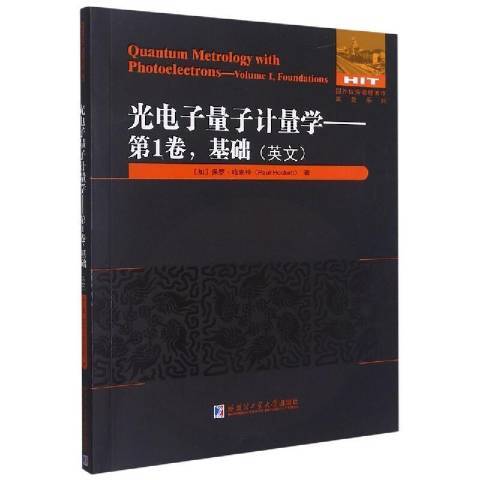《光電子量子計量學:第1卷基礎》是2021年哈爾濱工業大學出版社出版的圖書。
基本介紹
- 中文名:光電子量子計量學:第1卷基礎
- 作者:[加]保羅·哈克特
- 出版社:哈爾濱工業大學出版社
- 出版時間:2021年7月1日
- 頁數:176 頁
- 開本:16 開
- 裝幀:平裝
- ISBN:9787560395944
內容簡介,圖書目錄,
內容簡介
光學是一門古老而年輕的學科,21世紀已經成為光子學的世紀,光學技術已經滲透到各個學科和領域,與此相關的光學計量技術正在經歷新的變革和發展,傳統的計量基準面臨新的挑戰,雙光子相關技術將使光輻射基準由實物基準發展到量子基準,單光子探測技術將使光信號探測和微弱光成像向極限發展,針對這些技術的計量技術為我們提出了新的課題,應當引起足夠的重視。
本書是研究“光電子量子計量學”的第一卷基礎卷,共分為7部分內容。
圖書目錄
Map
A note on the online materials
A note on the references
Preface
Acknowledgments
Part I Concepts and fundamentals
1 Introduction: concepts in photoionization interferometry
1.1 Quantum metrology
1.2 Construction and deconstruction of paradigms: photoionization as
interferometry
1.3 Something old, something new: photoelectron spectroscopy
charged-particle imaging, technology, complexity and emergence
1.4 Putting it all together: quantum metrology with photoelectrons
References
2 Fundamentals of photoelectron interferograms
2.1 Continuum wavefunctions, observables and information content
2.1.1 Concepts
2.1.2 Continuum scattering states
2.1.3 Observables (general form)
2.1.4 Information content
2.2 Photoionization and photoelectron interferograms in detail
2.2.1 Dipole interactions, the weak field limit and photons
2.2.2 Coulombic systems: photoionization of one-electron atoms
2.2.3 Non-Coulombic systems: general introduction to molecular
photoionization
2.2.4 Non-Coulombic systems: single-photon ionization
References
3 Multi-photon processes
3.1 Molecular photoionization from prepared states
3.1.1 State-selected measurements
3.1.2 Rotational wavepackets and molecular alignment
3.1.3 Generic n-state wavepacket model
3.1.4 Born-Oppenheimer wavepacket treatment
3.2 Light and matter
3.2.1 Shaped laser pulses: intra-pulse dynamics and multiplexing
3.2.2 XUV + IR fields: optical phase effects
References
Part II Examples and numerics
4 Scattering wavefunctions and photoionization
Coulombic systems
4.1 Coulomb wavefunctions
4.2 Hydrogenic bound states
4.3 Dipole matrix elements and observables
4.4 Discussion
References
5 Scattering wavefunctions and photoionization
non-Coulombic systems
5.1 Computational tools
5.1.1 Toolchain
5.1.2 ePolyScat matrix elements
5.2 Homonuclear and heteronuclear diatomics: N2 and CO
5.2.1 Continuum wavefunctions
5.2.2 Dipole matrix elements
5.2.3 Observables
5.3 Larger molecules: DABCO and ABCO
5.3.1 Continuum structure and LF observables
5.4 MF observables
5.5 Summary: non-Coulombic molecular scatterers
References
6 Wavepacket dynamics
6.1 Rotational wavepacket model system
6.1.1 Rotational wavepacket calculations
6.1.2 Axis distributions
6.1.3 Ionization calculations
6.1.4 Photoelectron yields
6.1.5 Photoelectron angular interferograms
6.2 Electronic wavepacket model
6.3 Vibronic dynamics in CS2: model system
6.3.1 Overview
6.3.2 Experimental scheme
6.3.3 Modelling the wavepacket and observables
6.3.4 Limiting cases
6.3.5 Symmetry-based modelling and sensitivity
6.4 Vibronic dynamicsin CS2: realistic system and ab initio treatment
6.4.1 Computational overview
6.4.2 Ab initio time-resolved interferograms
6.4.3 Mapping dynamics
References
7 Light and matter
7.1 Shaped laser pulses
7.1.1 Atomic two-photon ionization
7.1.2 Intra-pulse dynamics and observables
7.2 XUV + IR fields: AR-RABBITT observables
References
編輯手記

